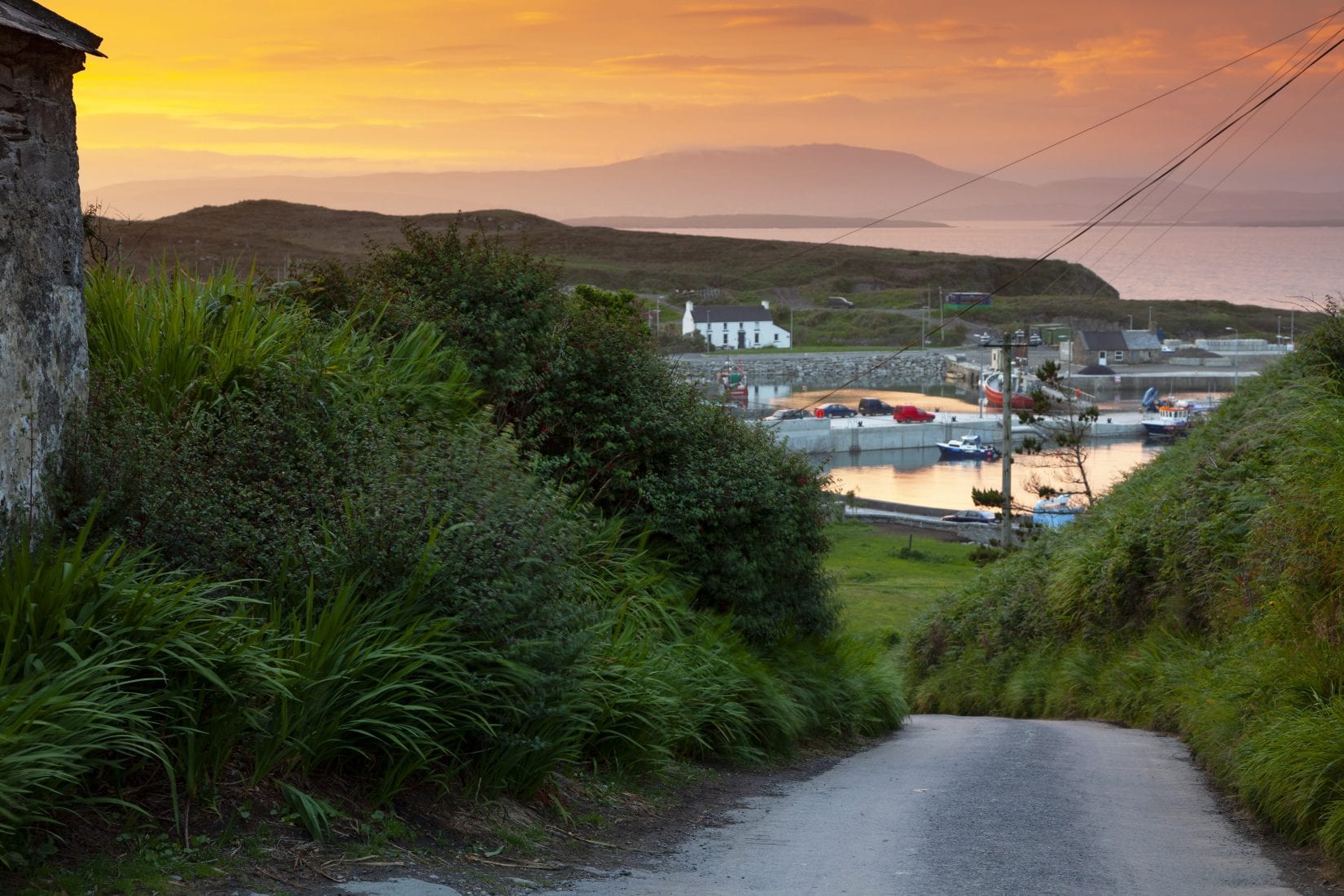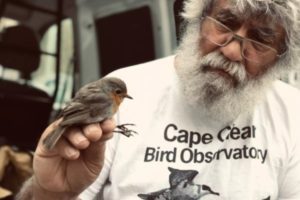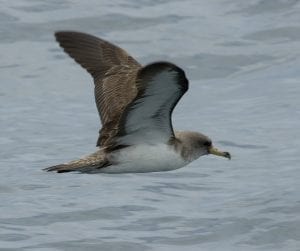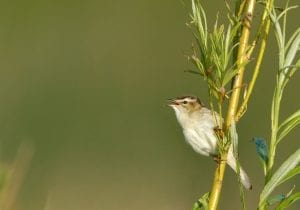Think of an island of just under 6km² in size and you would be forgiven for believing that your options for things to see and do are limited.
Yet, on making the crossing from Baltimore to Cape Clear Island in County Cork, you will pass through a portal to endless natural wonders.
Take it from Steve Wing. 25 years since first moving to the island to take up the reins as Cape Clear Bird Observatory’s Wildlife Officer, he is still making discoveries.
“There are all sorts of things to discover here. It is a great place to gain enjoyment and knowledge about any aspect of nature,” he said. “When it comes to the natural world, the learning is endless. If you take up birdwatching, you will by default start asking more questions. ‘What’s that moth or butterfly? ‘What’s the tree they’re feeding in?’ You want to follow on. The more you learn about one thing, the more you want to learn about another.
We don’t just do birding here; we do all sorts of things. I’m still learning about moth identification, for example. That’s as much a lesson for me as anyone else.”
Steve Wing
As the home of the Republic of Ireland’s only bird observatory and one of the best places in Europe to observe migratory seabirds and rarities, Cape Clear is a magnet for birdwatchers all around Ireland, and beyond. But what is it about this island that makes it such a haven for bird life?
“It’s location, location, location basically,” Steve responded. Indeed, Cape Clear’s remote island location on the southwestern coast and mild climate make it a hot spot for an abundance of species.
Many of those who visit Cape Clear to birdwatch today are following in the footsteps of the “pioneers” who founded the Observatory, as Steve explained. On a visit to Cape Clear in 1959, a group of young birdwatchers from England discovered many rarities and noted the potential Cape Clear Island offered for observing bird migration. Owing to their enthusiasm and a subsequent anonymous donation, the wheels were set in motion for the establishment of the Bird Observatory we know today. In 2000, Cape Clear Bird Observatory came under the ownership of BirdWatch Ireland, just two years after Steve took up his post. You can read more about the history of Cape Clear here.
Steve Wing Cape Clear Wildlife Officer in doorway of CCBO. Photo: Brian Caffrey
Steve’s work at Cape Clear varies, depending on the time of year. Between April and September, he is kept busy running his extremely popular “Wildlife Weekends” – short and interactive courses suitable for the beginner birder right up to the seasoned twitcher.
“When I am doing the courses, I am 100 percent with the people from the minute I wake up to the moment I go to bed. Whatever I am doing, they will get a chance to do. I take them for walks, do some ringing with them and tell them more about birds and Cape Clear in general. You’re not sitting in a classroom, you’re walking and talking and learning all the time,” he explained.
“Participants will learn how to identify birds by looking at things like bill shape, the size of the bird, the colour, what they’re feeding on and their location. They will learn some basic birdwatching knowledge and a little bit of fieldcraft, and, of course, get plenty of enjoyment. There is the social side to the weekend, too. Every evening, we go to the pub and discuss what has happened during the day.
If people leave here happy, have had a good time and want to come back, it’s a success in my eyes.”
In addition to Steve’s Wildlife Weekends, Cape Clear also plays host to the week-long “Seabirds to Songbirds” courses led by Dick Coombes. Through these courses, which will take place on two dates in 2024, participants will gain an insight into the world of migration and the joys of sea-watching.
Cory’s Shearwater. Photo: Artie Kopelman
When the guests have packed their bags and set sail for the mainland, Steve returns to his work on the island. There’s no such thing as a typical day, however, as his activities tend to shift with the changing weather and seasons. In late summer and early autumn, he might sit on the cliffs and monitor the seabirds – an activity known as seawatching. If the weather is calm and there are birds around, he might open the nets to do some ringing.
To date, approximately 23,000 individual birds have been ringed on Cape Clear, Steve said, adding that it is a job he feels extremely lucky to carry out.
“It is a total privilege to be able to hold on to a bird and show people the topography of it, how the feathers work and why the bill shape liked that. It is a lot easier to see close up. To see the look of awe on kids’ faces when they see a Robin or Blue Tit is fantastic. They’re amazed,” he said.
“Ringing itself is wonderful always but it’s always nice to catch something that’s rare, like a Golden Oriole, for example. Anything you catch that you’re not expecting to is a bonus.”
Information gathered from ringing and monitoring work has taught us a lot about how bird populations are faring on the island. For example, as Steve explained, Herring Gull numbers on the island have declined dramatically in recent years, likely due to a combination of factors including overfishing. Meanwhile, Fulmar numbers have risen as many have taken over former Herring Gull breeding sites.
“Song Thrushes seem to be doing incredibly well around here, whereas around most of the rest of Europe they are declining. Maybe it is the fact there aren’t so many pesticides being used here. We don’t know for sure,” continued Steve. “We seem to be getting more Mediterranean seabirds also. Last year, I had a record year for Cory Shearwaters for the whole south coast of Ireland. We had tens of thousands coming through.”
Ringing also gives us information about migration routes. We now know that some of the birds recorded on Cape Clear have travelled a tremendous distance to be there.
Sedge Warbler. Photo: Clive Timmons.
“I caught three adult Sedge Warblers in 2017 and up until three years ago, I was still catching two of the three when they returned to Cape after wintering in Gambia and Senegal. We did a very quick rough estimate on Google Maps and realised that these birds had pretty much done a circumnavigation of the planet in their lifetimes. It’s an amazing feat for these tiny birds the size of Robins.”
While Steve’s Wildlife Weekends are now fully booked for 2024 and only a limited number of places remain on the “Seabirds to Songbirds” courses, it is still possible to visit Cape Clear and experience the natural wonders that it holds. From April 8th, members of the public can take the boat from Baltimore and stay in the Bird Observatory’s self-catering style accommodation in shared dorms. For more information and to book, visit the BirdWatch Ireland website.
Regardless of whether you visit Cape Clear for a course or on a self-guided trip, alone or with friends, you are sure to depart with additional knowledge and a renewed appreciation for Ireland’s bird life.
“Capers say Ireland is the island off Cape and that this is the best place in Ireland to be. If you visit, you will learn a lot about the birds, you will learn more about the general art of birdwatching and hopefully, you will get to appreciate what a beautiful place Cape is.
Come with an open mind. You are sure to learn something.”






